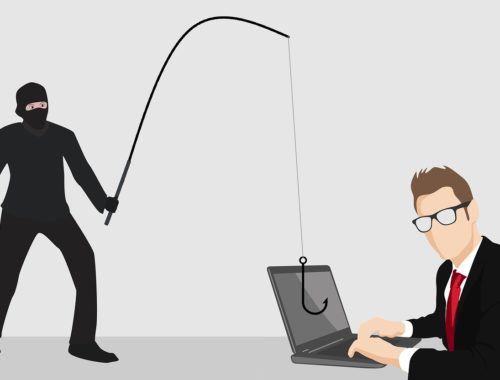
loan Forgiveness More Difficult Than Admission to Yale?
Public Service Loan Forgiveness Program
There has been a lot of chatter in the press lately about the Public Service Loan Forgiveness (PSLF) Program and how difficult it is to actually qualify. So many people were rejected after 10 years of making payments that one news outlet reported that your chances of getting into Yale law school were better than getting loan forgiveness! What is the Public Service Loan Forgiveness program and how is it possible that roughly 99% of processed applications to date have been rejected? Let’s take a look!
Who can apply for PSLF?
The Public Service Loan Forgiveness Program was designed to forgive the remaining balance on direct loans of borrowers who work full-time (30 hours or more) for a “qualified employer” and make 120 “qualifying monthly payments”. It’s a very popular program for physicians. Residencies count, so for a physician, a year or two of working in the public sector (e.g. Teaching or VA hospital) allows them to walk away from their loans despite making a comfortable 6 figure salary. This is the primary reason some want the program ended. Opportunities for veterinarians are more limited but they do exist. What exactly is a “qualified employer”? Well the definition provided by the US department of education:
- Government organizations at any level (federal, state, local, or tribal)
- Not-for-profit organizations that are tax-exempt under Section 501(c)(3) of the IRS Code
- Other types of not-for-profit organizations that are not tax-exempt under Section 501(c)(3) of the Internal Revenue Code, if their primary purpose is to provide certain types of qualifying public services
- Serving as a full-time AmeriCorps or Peace Corps volunteer also counts as qualifying employment for the PSLF Program.
Which veterinary positions qualify?
Well, certainly working for almost any veterinary school would apply. Note that it doesn’t have to be a state institution (e.g. Louisiana State) private not-for-profits (e.g. Tufts, Midwestern) also quality. Veterinarians working as state / federal public health officials, the armed forces, and many state / federally funded laboratories all qualify. So do many animal shelters and rescue organizations.
It’s important to note that in order to “qualify”, the 120 payments must be made on a non-defaulted loan made under the William D. Ford Federal Direct Loan Program. Loans under other federal student loan programs, (e.g. Federal Family Education Loan Program or the Perkins Loan Program) don’t qualify. These loans can only count if they are consolidated into a Direct Consolidation Loan; however, only payments made after consolidation can count toward the 120 “qualified” payments. There are lots of rules about payments and only payments that meet strict criteria actually count. The payments must be: made after Oct 1, 2007, under a qualifying repayment plan, for the full amount due (and only the full amount due), and made no later than 15 days after the due date. Qualified repayment plans include any of the income based plans (e.g. PAYE, REPAYE, IBR, etc). Payments do not qualify if the borrower is in-school, in the grace period, or has a deferment / a forbearance.
What went wrong for so many?
So the rules seem seems simple enough, and yet of the 33,300 applications made to have loans discharged under the program this year, only 96 were approved – a 99% rejection rate. Clearly something has gone wrong! Well for starters, 28% of the applications were rejected because the forms were filled out incorrectly. That’s reasonably straight forward. You cannot expect to have hundreds of thousands of debt forgiven if you don’t correctly fill in the paperwork. For other 70%, after 10 years of making payments, what went wrong? It’s not entirely clear. One often quoted mistake involves being in the wrong repayment program. For these folks, there may be some hope of relief. There is a temporary loan forgiveness opportunity for individuals who made 120 qualified payments but were in the wrong plan. You can read more about that here. Another mistake, which seems ridiculous, is that if you paid more than you required monthly payment, or paid it in advance of the due date, your payments were deemed not-qualified. How is this possible? When borrowers pay more than their required monthly payment the due date for their next payment changes. This is known as paid-ahead status and payments made in paid-ahead status aren’t qualified. Sounds crazy – because it is, but if you went 10 years making more than your exact monthly payment they could all be “not qualified.”
How can you be sure to qualify?
You can only apply for loan forgiveness after your 120th qualified payment; however, each year (and whenever you change employers) you have the opportunity to submit an Employment Certification Form. The department of education uses this information to determine if you are making qualifying PSLF payments. If you fail to submit this annually, you will be required when you apply for forgiveness to submit an Employment Certification Form for each employer where you worked. Also if you wait – you won’t know until it’s too late if there is a problem. So don’t wait!
So some quick and simple rules for Public Service Loan Forgiveness (PSLF)
- You have to make 120 “qualified payments” while in an income based repaymnt plan
- Loan must be a Direct loan NOT a Federal Family Education Loan or a Perkins Loan
- You must be employed by a not-for-profit organization
- Every year you must file an Employment Certification to be certain your payments qualify
Oh and one last thing. When asking someone to forgive $100,000s of debt – it pays to fill in the paperwork correctly! You can read more about Public Service Loan Forgiveness Program here.




